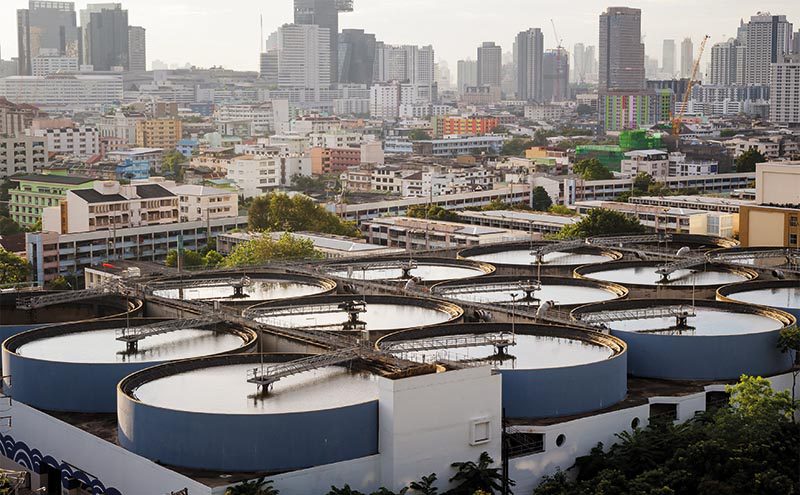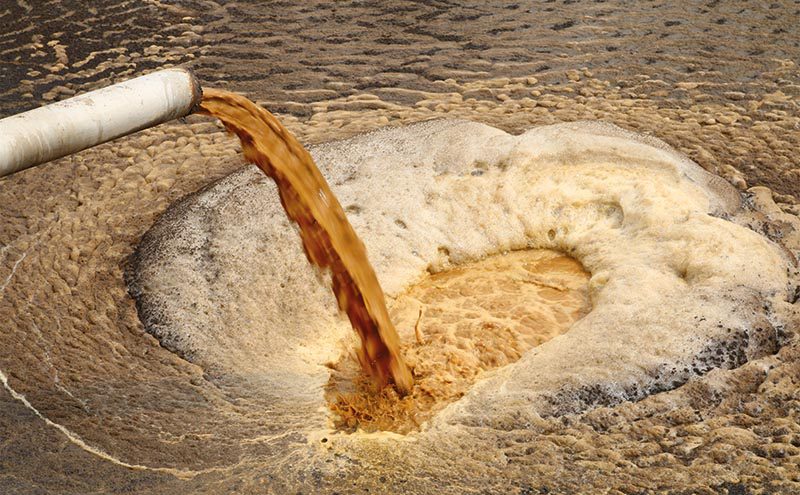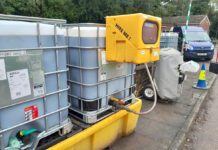Dr Chris Charles, Wastewater and Water Treatment specialist at Genesis Biosciences – the first company to develop and manufacture its own microbial and antimicrobial cleaning products – discusses the benefits of using biological products as an alternative solution to tackle odour issues in the wastewater and water treatment industry

What are the most common causes of odour problems in wastewater treatment?
It’s no surprise that a facility dealing with wastewater generated by a local population will have a distinct odour. Complex organic materials from a multitude of sources – domestic, trade or industrial – combine to produce effluent capable of generating an array of malodours. From rotting eggs and cabbage to eye-stinging ammonia, a wastewater plant delivers an array of scents which often cause discomfort to the local community.
The common causes of these odours are generally related to the following: sulphur containing compounds such as hydrogen sulphide and mercaptans (responsible for rotten egg smell), ammonia and amines (fishy smells), ketones and aldehydes (sickly sweet) and volatile organic compounds (vinegar and off-milk odours.)
How are these noxious compounds generated?
In zones low and deplete in oxygen, microbes capable of anaerobic metabolism will proliferate. These microorganisms undertake the hydrolysis and fermentation of organic molecules such as lipids, proteins and polysaccharides and degrade them to smaller compounds such as acetic acid or propionic acid (vinegar and body odour smells.) This type of metabolism subsequently drives down both local pH and redox potential.
These conditions, coupled with the end products of fermentation, favour both gaseous sulphide release (due to acidic conditions) and sulphide production which is carried out by the sulphate-reducing bacteria. These bacteria are found in many environments and persist even when sulphate is not available for use. They generate energy by coupling the oxidation of organic matter to the reduction of sulphate which acts as an electron acceptor.
In essence, the bacteria ‘breathe’ sulphate instead of oxygen, and instead of generating carbon dioxide they generate sulphide. The human nose can typically detect sulphide, mercaptan and dimethyl sulphide at concentrations in the low parts per billion, therefore even the generation of small amounts of these compounds can create nuisance odours.
What different types of solutions are available?
Traditional treatments for malodours at a facility, whether urban or industrial, come in many different forms including chemical additions; “capture and treat” technologies which often combine physical covering of plant with absorption and scrubber systems; or biological filtration.
The use of chemicals centres around tackling either septicity or modifying pH to combat odours related to sulphides. Common techniques include the use of nitrate salts or ferric, and aeration. But great care should be taken when dosing such chemicals, as under-dosing may prove ineffective and over-dosing may cause problems further downstream.
The implementation of capture and treat technologies can treat malodour via a few different mechanisms. By employing covers, a plant can prevent gaseous malodours from escaping by covering infrastructure such as anoxic selector tanks and primary effluent clarifiers. Malodours can then be removed via passage through chemical scrubbers for absorption into a liquid medium or through adsorption systems for immobilisation onto a solid support such as activated carbon.
Another method to remove odour is to use biological systems such as a filter or scrubber whereby gas comes into contact with microorganisms and a packing system to encourage degradation of the malodour. Although capable of tackling the issues of odour, these solutions require capital investment and can be an expensive endeavour.
Although tried and tested, the technologies mentioned above do come with some drawbacks such as limited lifespans, maintenance requirements and high initial set-up and running costs. Recently, an alternative approach has shown promise in helping to control odour issues and this is through the use of biological products.

What are biological products?
Biological products come in either liquid or solid form and generally contain a blend of microorganisms along with preservatives and application specific chemicals. When considering the application of biological products towards odour control, two different methodologies are finding wider use within the industry. These are either through the use of atomisers or mist system techniques or via the direct dosing of bacteria into wastewater systems using an approach known as bioaugmentation. Where, for each of these methods the dominant microbial agents are bacteria of the Bacillus genus, chosen due to their ease of manufacture, low pathogenicity and long-term stability (due to their ability to form spores).
What results can be achieved?
Mist systems typically dose an absorbent agent around the affected area, be it small (a clarifier) or large (lagoon). The technology works via methods relating to adsorption, whereby the malodour is bound to, or encapsulated by the agent and is either neutralised or masked from the receptors within the nose. The bacteria within these products then act to facilitate the degradation of either captured malodorous compounds or the sources of these compounds. With this method offering a fast acting and cost effective primary and/or complimentary approach to odour control.
The direct dosing of different microbial species provides an opportunity to expand the metabolic potential of a system as well as impact the growth of sulphate-reducing bacteria through a range of mechanisms. These mechanisms may include the production of antimicrobial secondary metabolites or through direct competition for space and resources. Further to this, microbes are often combined with a chemical agent such as sodium nitrate or percarbonate to promote either denitrification or aerobic metabolism within anaerobic zones. Whereby the supplementation of additional microbes such as Bacillus aims to use up potential organic substrates capable of facilitating sulphate reduction.
Ammonia issues may also benefit from bioaugmentation, with improvements in odour often noted from slaughterhouse waste and slurries after the addition of different Bacillus species. With the mechanism behind this likely passive ammonia uptake due to increased biomass production rather than enhanced nitrification.
What are the performance considerations for bioaugmentation?
Although becoming more popular, not all bioaugmentation products are equal in performance. When considering dosing bacteria to a system it is important to take into account their residence time.
The key to the activated sludge system is the ability to grow and retain biomass via flocculation and settlement. If a bioaugmentation product contains microbes that do not form biofilm or flocs then it is likely their residence time will be equal to the hydraulic retention time, rather than the longer solids retention time. It is this prolonged residence time that is needed for the additional microbes to acclimate and proliferate in order to make any significant difference within a system.
Outlook
Genesis Biosciences specialises in the production of environmentally friendly, biological solutions to common wastewater and pollution issues. Our technological offering towards odour control via spray
and atomiser systems has been successfully deployed to combat malodour at a range of sites including landfills, piggeries and industrial WWTW. With over 23,000L of concentrates sold within the last year alone, the technology is proving to be a growing and sustained success with both fragranced and un-fragranced blends available for dosing.
There are many different wastewater bioaugmentation products available for a range of different problems, however, these products are often poorly defined with little supporting data. The tip of the bioaugmentation iceberg has only been scratched with the true potential of biological products especially those containing Bacillus still to be realised for wastewater treatment. Taking to the challenge of providing better bioaugmentation products for wastewater applications, Genesis Biosciences is using cutting edge genomic and bioinformatic approaches to both screen and identify better candidate organisms for applications in the wastewater sector.
Their aim is to develop a robust and rigorously tested product range that can be easily and cost effectively applied to improve our wastewater quality.






